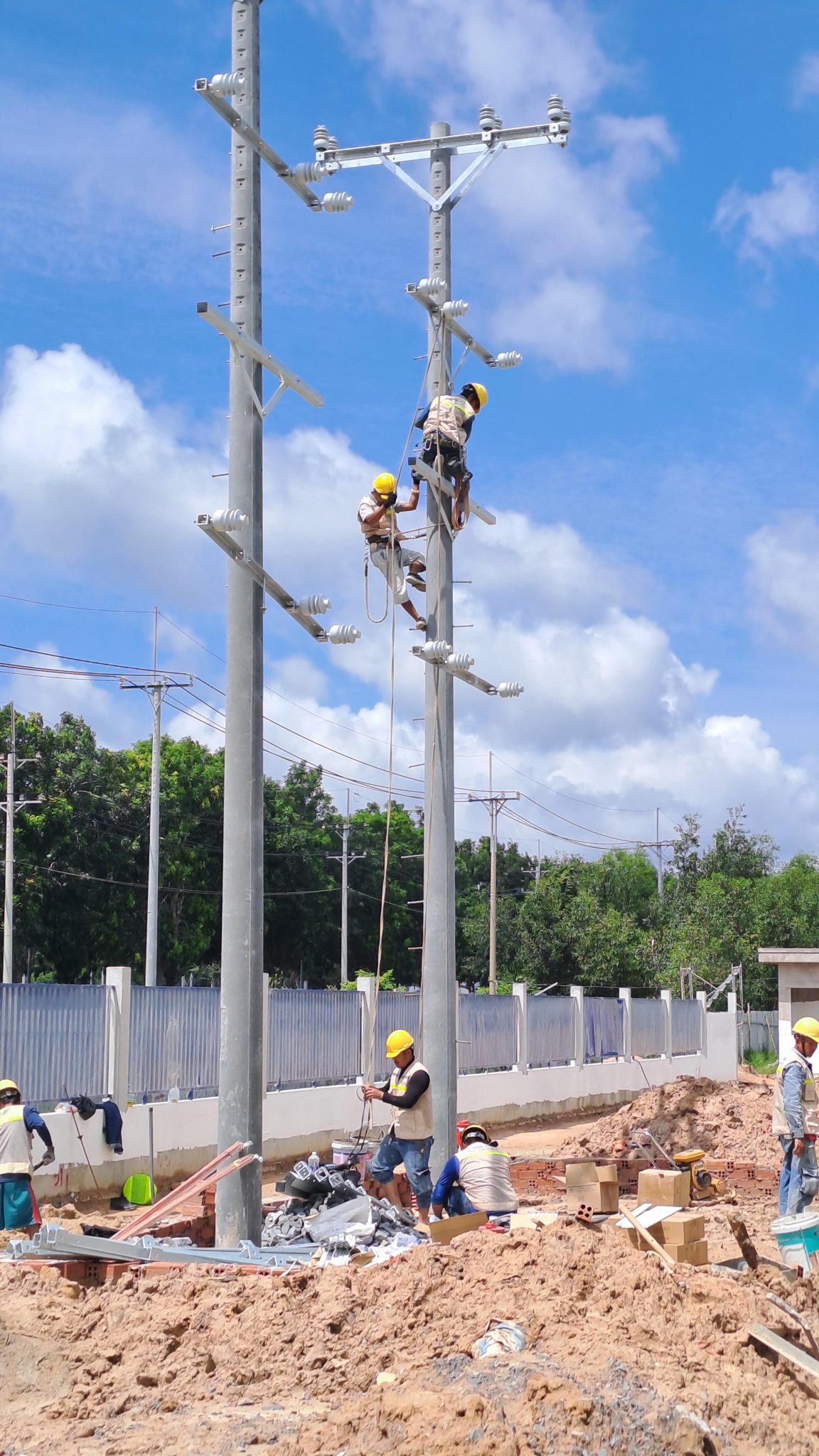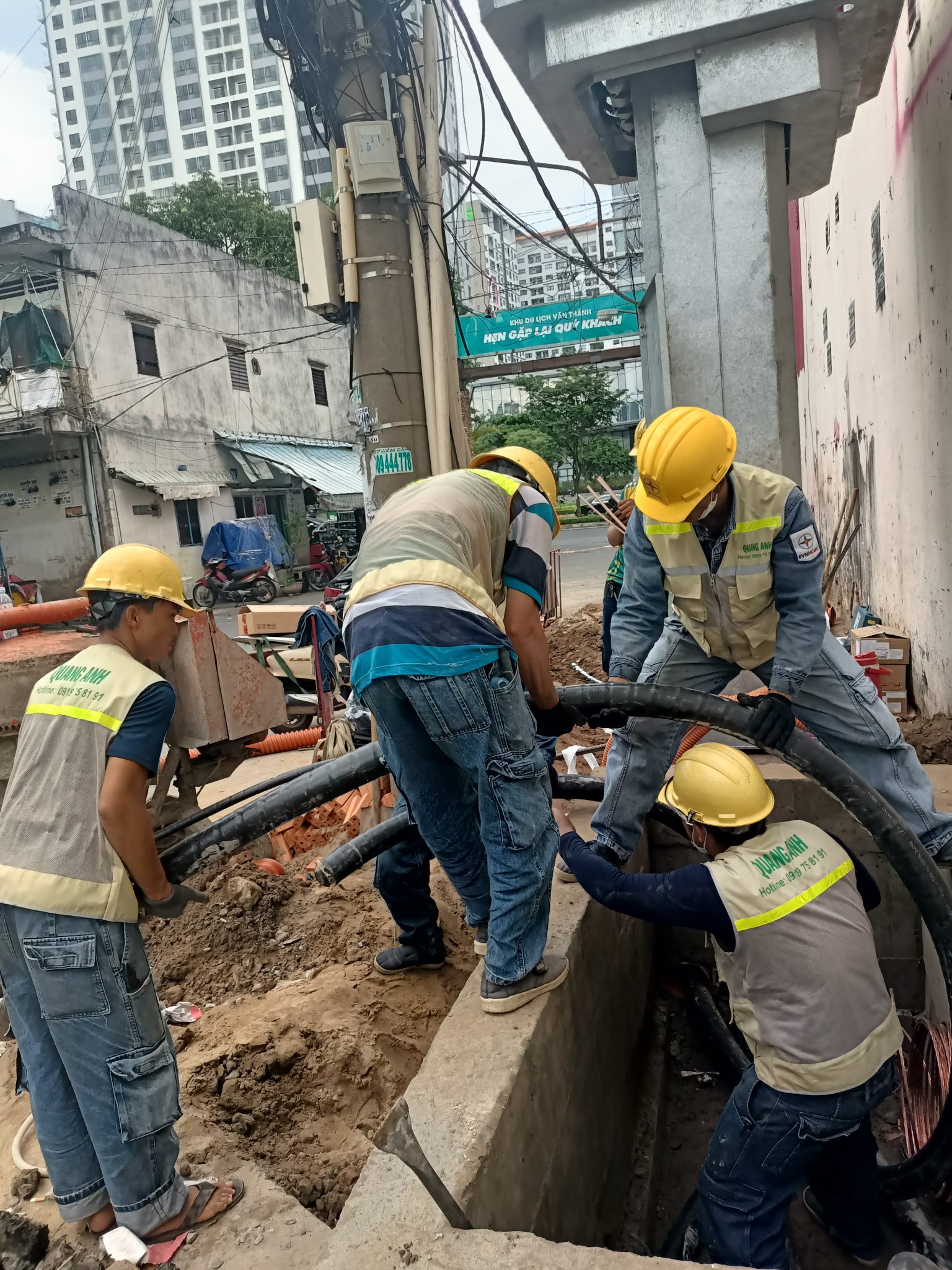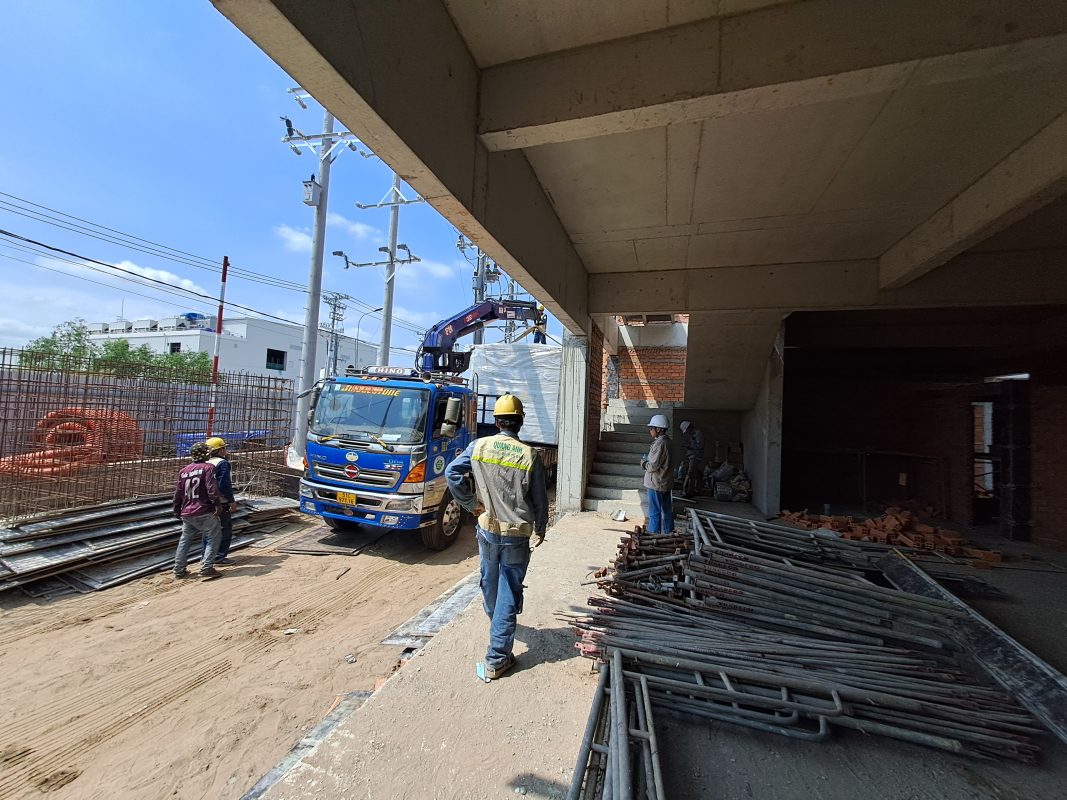The industrial electrical system is a decisive factor in production operations, accounting for 40-60% of a factory’s M&E scope. Process and technical requirements play pivotal roles.
5-Step Process for Industrial Electrical System Design
Designing an industrial electrical system starts with collecting information and conducting field surveys. Engineers need to gather data on area, machinery, industry specifications, and the business’s electricity needs. This foundational step determines the total power consumption, aiding in selecting suitable equipment. Next, the design of the high-voltage grid involves setting up transmission lines, substations, and switchboards to deliver electricity from the national grid to the factory. For the low-voltage network, ensuring a voltage below 1kV and well-calculated lighting systems for each area is essential to prevent waste or insufficient lighting.
- Customer Information Collection: The design process begins with engineers obtaining and surveying practical information from clients. Detailed data such as floor area, staff numbers, machinery type, and factory characteristics are essential for accurate network design.
- Consultation and Proposal: After data collection, engineers advise clients on feasible, safe, and cost-effective design options. Choosing equipment and materials cautiously ensures they are appropriate for the actual conditions and project needs.
- Preliminary Design Draft: Based on gathered information and chosen options, a preliminary electrical design draft illustrates equipment layout, wiring, and operational areas. This step allows clients a comprehensive view of the electrical system before proceeding to the next stage.
- Client Approval of Preliminary Design: A crucial step is obtaining client approval for the preliminary draft. Close interaction ensures all requirements are met, from functionality to safety and aesthetics.
- Finalizing the Design: Incorporating client feedback, the design is refined and completed, ready for execution. This stage is vital for ensuring the safety and effectiveness of the future industrial electrical system.
Key Design Considerations
- Load Calculation: An essential process to determine maximum electricity consumption, ensuring sufficient energy for all manufacturing activities.
- High and Low Voltage Network Design: Accurate processes are required to ensure safety and efficiency in system operation.
- Material and Equipment Selection: Using insulative materials and safety devices like circuit breakers to protect the system from unexpected incidents.

Essential Technical Requirements in System Design
Industrial electrical systems must meet stringent technical standards, addressing safety aspects like insulation and explosion-proof features during installation and operation. Balancing loads is crucial to smooth system performance, preventing overload. Accurate cost estimation for electricity consumption is vital, with minimal error and compliance with TCVN standards in industrial electricity.
Design not only demands precise technical elements but also adherence to standards for achieving high performance, safety, and sustainability. Below are the core technical requirements to consider during the design process:
HVAC System Design Requirements
- Design Standards: Engineers must comply with TCVN 5687-2010 standards for air conditioning and ventilation, along with SMACNA standards for duct fabrication.
- Air Quality: Ensure indoor air quality by maintaining fresh air standards set by ASHRAE.
Technical System Design Requirements in Hospitals
- Wastewater Treatment: The system must follow TCVN 7382:2004 and TCVN 6772:2000 standards to ensure wastewater quality before discharge.
- Safety and Hygiene: Ensuring a safe and hygienic environment for both patients and staff.
Safety Requirements in Electromechanical System Design
- Compatibility: Ensure the compatibility of products and electromechanical systems to facilitate international commerce and effective use.
- Safety Standards: Adhere to international and national safety standards to prevent accidents and ensure smooth system operation.
Fire Prevention System Design Requirements
- Immediate Fire Detection: Systems must quickly detect fires and alert promptly to ensure safe evacuation.
- Signal Interference Resistance: It is crucial to maintain independent system design for fire alarms from other construction systems.
Work System Design Requirements
- Requirement Analysis: The system design process should include requirement analysis and establishing objectives for performance and labor safety.
- Function Allocation: Define and efficiently allocate system functions between humans and devices.
These requirements emphasize the importance of adhering to design standards to achieve electrical load balance, ensure safety, and optimize electricity cost forecasts.

Trends in Industrial Electrical Systems
Currently, smart electrical monitoring systems are a prominent trend, integrated with IoT to track real-time energy consumption. Renewable energy, such as solar panels, is also incorporated to reduce dependence on traditional power grids, offering economic benefits and environmental protection.
Amid global green transitions, Vietnam’s industrial electricity sector is rapidly integrating advanced solutions to enhance efficiency and protect the environment.
A notable trend is the strong shift towards renewable energy like solar and wind power, marking the industry’s commitment to minimizing negative environmental impacts. This establishes a sustainable energy ecosystem while creating new economic opportunities by optimizing operational costs and improving energy efficiency.
Simultaneously, smart industrial electricity is developing robustly. This system enhances control and energy management, enabling businesses to optimize electricity use and reduce greenhouse gas emissions. It’s a necessary solution for sustainable production needs in the near future.
The role of electrical automation in industrial factories is also becoming increasingly crucial. The ability to integrate automation systems enhances labor productivity, reduces production costs, and improves the quality of output products. This aligns with the development trend of modern smart factories.
Moreover, the smart energy network is transforming how energy is produced and consumed. Industrial electrical devices like generators are increasingly integrated into this network, optimizing distribution and reducing energy waste, while enhancing system stability.
Lastly, the development of industrial electrical equipment with many modern improvements is being strongly promoted. New equipment from companies like ABB, Mitsubishi, Eaton, and Schneider Electric enhances performance, speeds up processing, and saves costs, meeting the growing demands of the industrial electrical market.

Effective design of industrial electrical systems not only ensures safe operation but also optimizes cost and enhances equipment durability. Utilizing new technologies like IoT and renewable energy helps businesses achieve sustainability and energy savings.
Discover optimal solutions for industrial electrical system design with QuangAnhcons. Contact us via Hotline: +84 9 1975 8191 for detailed consultation.
QuangAnhcons provides design and installation services for industrial electrical systems with high safety and efficiency standards, utilizing advanced technology to ensure sustainable operation.


Related Posts
Investment Costs for a 1MWp Solar Power System and Influencing Factors
Explore the investment costs for a 1MWp solar power system in Vietnam and the influencing [...]
Sep
QuangAnhcons: Elevating Wind Energy Solutions
Explore QuangAnhcons' leadership in wind energy and renewable solutions in Vietnam. [...]
Sep
Electrical Contractor Strategies at Becamex Industrial Park
Discover the strategic advancements and partnerships of the electrical contractor at Becamex Industrial Park. [...]
Sep
Investment Insights for 1MW Wind Energy in Vietnam: Costs and Opportunities
Discover the detailed analysis of costs and opportunities for investing in 1MW wind energy projects [...]
Sep
Advanced Electrical Installation Solutions by QuangAnhcons
Explore advanced electrical installation solutions and modern technology with QuangAnhcons. [...]
Sep
Enhancing Industrial Electrical Services with Quanganhcons
Discover Quanganhcons' expertise in industrial electrical services, offering efficient and sustainable power systems. [...]
Sep
Comprehensive MEP Solutions by QuangAnhcons: From Design to Maintenance Excellence
Discover optimal MEP solutions with QuangAnhcons, dedicated to excellence from design through maintenance. [...]
Sep
Comprehensive Electromechanical Contracting Solutions by QuangAnhcons
Explore QuangAnhcons' comprehensive services for efficient and safe energy system solutions. [...]
Sep
QuangAnhcons: Empowering Industrial Energy Solutions
Discover how QuangAnhcons delivers optimal industrial EPC solutions. [...]
Sep
Effective Industrial Construction Management and Execution
Optimize your industrial projects from design to execution with our contractor services. [...]
Sep
QuangAnhcons: Pioneers in M&E and Renewable Energy Solutions
Discover QuangAnhcons' innovative M&E services and renewable energy solutions. [...]
Sep
QuangAnhcons: Expertise and Outstanding Services in the Electrical Sector
Discover the unmatched expertise and services of QuangAnhcons, setting superior standards in the electrical contracting [...]
Sep
QuangAnhcons: Innovation and Precision in Industrial Electrical Contracting
Discover QuangAnhcons, a top contractor offering superior electro-mechanical solutions. [...]
Aug
Expert Solutions for 2x2500kVA Substation Projects with QuangAnhCons
Explore QuangAnhCons, a forefront entity in designing and constructing large industrial substations. [...]
Aug
QuangAnhcons: Comprehensive MEP and Electrical Solutions for Industry
Explore QuangAnhcons' MEP solutions, a leader in electrical systems and substations. [...]
Aug
QuangAnhcons: Premier Electrical Contractor Solutions & Services
Discover QuangAnhcons' electrical contracting services, from complete system installations to underground network solutions. [...]
Aug
QuangAnhcons: Premier MEP Provider for Integrated Electrical Solutions
Discover comprehensive MEP and renewable energy solutions with QuangAnhcons. [...]
Aug
Advanced and Effective Solutions by QuangAnhcons for 5000kVA Substation Contractors
Discover the 5000kVA substation solutions from QuangAnhcons, ensuring high performance and safety. [...]
Aug
Explore QuangAnhcons: Innovating Electrical Contracting with Cutting-Edge Technology
Explore QuangAnhcons, a top electrical contractor with superb execution and advanced technology offerings. [...]
Aug
Trusted MEP Contractor QuangAnhcons: Excellence in Construction Quality and Commitment
QuangAnhcons excels in MEP construction, ensuring top-notch quality and safety. [...]
Aug